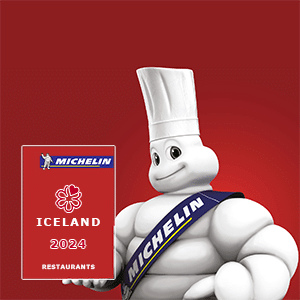Lifid
Tawny A Port Primer, And
Portugal’s aged tawny Port is accessible, affordable and ready to drink now
Vintage Port is rare and expensive, a darling of wine magazines and point-obsessed oenophiles who wait breathlessly each spring to see if the Port houses „declare“ a vintage. Aged in cask a mere two years before being bottled and sold young and tannic, vintage Port must be cellared by the consumer for  decades before it is ready to drink, raising the risk of drinking it too soon, or opening it too late.
decades before it is ready to drink, raising the risk of drinking it too soon, or opening it too late.
Aged tawny Port avoids those dangers, and can be eminently more affordable and accessible than vintage Port. Aged in cask for a decade or more — until it takes on the nut-brown tawny hue that gives the wine its name — aged tawny is ready to drink as soon as it is bottled.
That makes it exceedingly consumer friendly, considering most wines purchased in the United States are bottoms up within a few days of leaving the store. We hire people to clean our gutters, tend our lawns, nurture our gardens, raise our kids — why not pay someone to age our wines so they’re ready from the get-go?
Though it only accounts for 5 percent of all Port production (vintage Port accounts for 1 percent), aged tawny has enjoyed a slow but steady growth in popularity in the U.S. market in recent years, especially as consumers learned to distinguish it from common tawny Port, a mass-produced, generic product. Confusing tawny and aged tawny is akin to mistaking an unexceptional California appellation Cabernet Sauvignon for one of Napa Valley’s finest.
A decade ago, the United States imported about 15,000 cases of aged tawny a year, accounting for 7 percent of world consumption, according to Adrian Bridge, managing director of the Fladgate Partnership, which includes the Port houses of Taylor Fladgate, Fonseca, Croft and Delaforce. By last year, U.S. imports of aged tawny had grown to 80,000 cases, or 20 percent of total output. The Fladgate Partnership is the second-largest exporter of Port to the United States, after Symington Family Estates, which owns Warre’s, Graham’s, Dow’s and other Port houses.
Bridge is a Port salesman straight out of central casting. Reassuringly British and resembling the actor Hugh Grant, Bridge, 43, married into the British family that has owned and operated Taylor Fladgate for more than two centuries.
„Vintage Port is rare, and we tend to drink it only on special occasions,“ Bridge says. „Aged tawny, on the other hand, is lighter in style, which makes it more appealing in warmer weather, especially when served slightly chilled.“
Bridge recommends aged tawny as an ideal partner to apple pie, creme brulee, creamy cheeses or desserts based on nuts or dried fruits — it pairs well with any food that calls for a sweet wine, even foie gras. And then of course, there is the classic Port partner, a fine cigar.
Aged tawny and vintage Ports begin life as equals. Both are made from the traditional Port grapes, primarily Touriga Nacional, Tinta Barroca, Touriga Francesa, Tinta Roriz and Tinta Cao, in a melange determined more by what vines happen to be in any given vineyard than some winemaking recipe. Fermentation of all Port is halted by the addition of neutral grape spirits, which boosts the alcohol level and preserves natural sweetness in the wine.
The grapes are grown on the steep slopes of the Douro River in northern Portugal, but many of the best wines are aged in the cities of Oporto or Vila Nova de Gaia at the river’s mouth. The less extreme temperature variations and higher humidity at the Atlantic Ocean’s edge help the wines preserve more fruit flavor as they age. Oxidation is the key to aged tawny’s color and nutty character, but it needs to be slow and controlled; wines aged in the Douro Valley tend to be drier and more astringent than those aged closer to the Atlantic.
Nowadays the „whump whump“ of mechanical feet can be heard throughout the Douro Valley at harvest time, as most houses have abandoned the traditional method of treading grapes by foot, or tread only small portions of their grapes the old-fashioned way. Yet the Fladgate Partnership continues to press its 2,000 tons of grapes each harvest by human feet in low stone troughs called lagares.
„We remain committed to foot treading as it produces the best results, and we aspire to produce a vintage Port every year,“ Bridge says.
Mechanical pressing, despite various attempts to mimic the human foot, risks crushing the grape seeds and releasing harsh tannins into the wine. Real feet, with their ticklish sensibilities and the weary giddiness of the treaders (who likely picked the grapes earlier that day) tend to be gentler.
A few months after harvest, the wines are separated into lots according to their quality. Lots considered most ageworthy are set aside for another year and will become either a „declared“ vintage Port or a firm’s single-quinta (vineyard) bottling (see „Port primer,“ Page F5). Individual producers can declare a „vintage,“ though most tend to do so for the same years, when harvest conditions are most ideal and the young wines show potential for aging three decades or more. Over the past two decades (since the declaration of the 1985 vintage), there have been only five declarations: 1992, 1994, 1997, 2000 and 2003.
Other lots are set aside to become aged tawnies. The wine so designated this year, from the 2005 harvest, will be aged in 600-liter casks called „pipes“ and released a decade from now as 10-year-old tawny. Each year, the wine will be racked off — the casks emptied into large vats — then put back in pipes, a process that loses about 3 percent of the wine each year, due to discarded sediment left behind in the pipes and the so-called angels’ share lost to evaporation while in the casks.
At a New York tasting, Bridge offered samples of wine from a decade of vintages now in cask, 1996 through 2005. These wines aspire to become Taylor Fladgate 10-year-old tawny. The younger wines were dense purple, with sweet primary fruit flavors of blackberry, currant and blueberry. Along about the fourth year, the color began to change, with an amber tint noticeable on the rim. By age six and beyond, the color was increasingly tawny, and the flavors changed to dried fruit, nuts, clove and orange peel. Caramel became pronounced at age eight, perhaps influenced by the addition of small amounts of older vintages as the winemakers aimed for a consistent house style. At nine years, everything — color, fragrance and flavors — came together nicely.
The current release of 10-year-old tawny, with fruit primarily from the 1995 vintage, had been bottled less than three weeks previously. „Polished“ by cross-flow filtration — a gentle technique that avoids the use of harsh charcoal filter pads — and topped off with a little wine from other years, the 10-year-old was lush with flavors of caramel, orange peel, and dried apricot and figs.
 The aging process for aged tawny Port resembles that for oloroso sherry in that both rely on exposure to oxygen over time to produce the wine’s brown color and rich, nutty flavors, and that both are made to a consistent house style that is independent of vintage quality from year to year.
The aging process for aged tawny Port resembles that for oloroso sherry in that both rely on exposure to oxygen over time to produce the wine’s brown color and rich, nutty flavors, and that both are made to a consistent house style that is independent of vintage quality from year to year.
That’s where the similarities end, however. Sherry is made by a solera system, in which no more than a third of the wine in the oldest casks can be bottled each year. These casks are replenished by younger wine in the next group of casks, and so on.
With aged tawny, the wine from a particular vintage ages by itself in casks until about year six, when the winemakers begin to blend in small amounts of wine from older reserved casks (or even younger wine) to meet the house style. This means we don’t need to consult our vintage charts to see if it rained during the harvest in the Douro 10 years ago.
„The program is designed to create a product at the end that is independent of vintage quality, independent of temperature and humidity conditions in the intervening years while the wine aged,“ Bridge says. „So in essence we are not looking backward to the vintage conditions, but forward to the wine in the glass.“
Every few years, there are a few reserve lots that don’t make it into the final blend for vintage Port. These are placed aside for aging as 20-year-old or 40-year-old tawny. (Thirty-year-old tawny is also made, but rarely, as the flavors develop more dramatically between 10 and 20 years, and 20 and 40 years.) The principle and the technique are the same as for the 10-year-olds, while the additional years in cask deepen the color and intensify the flavors of the wine.
When aged tawny is bottled, the bottling date is typically stamped on the label. Although about 95 percent of the wine in that bottle will be from the vintage 10 years ago, it is really the bottling date that gives consumers an indication of the wine’s condition and freshness. Remember, the aging has already been done for us.
„You can’t take a 20-year-old tawny and put it in the cellar for two decades and have a 40-year-old tawny,“ Bridge warns. „What you’ll have is a tired 20-year-old.“ Aged tawny is meant to be drunk when it is released. Because the tannins have already faded during aging in cask, it will not improve further in your cellar.
The wine’s history is also key to the question nearly everyone asks about Port: How long will the wine remain good once the bottle is opened?
The answer lies in how long the wine remained in cask, Bridge explains. „When you pull the cork on a bottle, you are in essence returning the wine to its natural environment — oxygen,“ he says. „The longer the wine is aged in cask, which is an oxidative environment, the more stable it will be when you expose it once again to oxygen.“
So vintage Port, which was only aged in cask for two years and may have spent decades cloistered away from oxygen in someone’s cellar, will be fragile once exposed to air.
„However, since vintage Port is typically a special occasion wine, opened when we have friends over for a dinner party, this is not really a problem, because the bottle will be finished that evening,“ Bridge says.
Aged tawny, especially the 20- and 40-year-old specimens, can remain open for weeks and maintain their quality, because its time in cask gives it longevity. They also do not need to be decanted, as they were filtered just before bottling and should not have any sediment.
Forty-year-old tawny currently comes primarily from the 1960s, but wines from much older vintages are often used sparingly to spice up the blends. Taylor Fladgate and Fonseca, for instance, currently use small amounts of wine from 1900, 1908, 1927 and 1934 in their blends.
Bridge brought a cask sample of the Taylor Fladgate aged tawny from 1900 to the New York tasting. It was dark, nutty brown in color, with olive-green tints around the rim. It smelled of burnt orange and roasted hazelnuts. On the palate, it lacked the coherence and structure that Taylor Fladgate is known for, but it was delicious and amazingly fresh for a wine of its age. As I sipped, it occurred to me that Queen Victoria might have inquired about the harvest conditions that year, and that my grandparents were then preparing to come to America from Northern Ireland in search of a better life. I sniffed again and took another taste. There was history in my glass, and a century of dreams.
——————————————————————————–
Portugal time line
1952
Delaforce Colheita Port
1960
Ten members of Portugal’s Communist Party escape from high-security prison.
1966
Fonseca 40-Year-Old Aged Tawny Port, and Portugal qualifies for its first World Cup; loses semifinal to eventual champion England.
1974
„The Captains’ Revolution“ coup topples Portugal’s military government.
1976
Taylor Fladgate 30-Year-Old Aged Tawny Port
1986
Delaforce Curious and Ancient 20-Year-Old Aged Tawny Port; Portugal admitted to the European Community (now E.U.); Slightly fizzy Mateus rosé dominates Portugal’s table-wine exports.
1991
World Wide Web developed.
1996
Taylor Fladgate 10-Year-Old Aged Tawny Port
1999
Portugal’s last overseas territory, Macau, is given back to China.
2004
Portugal hosts the European Football Championship.
——————————————————————————–
Port primer
Port has a bewildering array of categories, and it can be tough to sort them out. Here are the basics.
Vintage
The most rare and expensive Port, vintages are „declared“ about 18 months after harvest, but only in the best years when the wines show the highest quality and promise extremely long aging. Each house declares a vintage, but they tend to declare in the same years, when harvest conditions are most favorable. Properly stored, vintage Port tends to reach maturity about 20 years from harvest, though it typically lives much longer.
Single quinta
When a house decides not to declare a vintage, it may bottle its best wines as single quinta, or single vineyard, Port, with a vintage year noted on the bottle. Like vintage Ports, these are bottled two years after harvest and are meant to be aged a decade or more in bottle. They are less expensive because they are deemed to be early maturing.
Aged tawny
This Port is made from wines set aside a few months after harvest and aged in small (600-liter) casks called pipes. Through long-term aging — 10, 20 or more years — the wines develop an amber „tawny“ color and flavors of nuts and dried fruits. These are blends of different years, meant to be drunk within two to three years of bottling.
Colheita
This is an aged tawny from a single vintage. These bottles tend to be rare and expensive.
Late bottled vintage
A relatively new style of Port, developed by Taylor Fladgate in the 1970s. Aged in large vats (instead of the smaller pipes used in aged tawny), LBVs preserve fresh fruit flavors and pair well with chocolate, and are ready to drink upon release.
Ruby
A young Port meant to emphasize fruit flavors, it is not meant for aging.
Tawny
A young Port with some wood influence and brief exposure to air, which gives it a tawny color. It is not for aging.
——————————————————————————–
Other port
Many wineries in California and Australia produce Port-style wines by adding neutral spirits to stop grapes from fermenting before all their sugar converts to alcohol. Other than geographic location, the main difference between these and traditional Port is usually the type of grape used: Zinfandel and Cabernet Sauvignon are popular in California; Shiraz in Australia.
The taste of aged tawny
Taylor Fladgate 10-Year-Old Tawny ($29): Amber in hue, the wine offers scents of caramel and orange, flavors of dried apricot and fig.
Fonseca 20-Year-Old Tawny, ($53): This wine is seductive in sight, smell and taste. The palate is lush, full and long, with flavors of earth, wood, dried fig and tea.
Taylor Fladgate 20-Year-Old Tawny ($50): Dried-orange in color, this wine displays a stiff upper lip — good structure, firm character and a long finish.
Taylor Fladgate 30-Year-Old Tawny ($110): This wine is dry, a tad astringent, featuring flavors of dried fruit on a medium finish.
Fonseca 40-Year-Old Tawny ($145): Much darker than the younger wines. Flavors unfold of candied orange peel, clove and cardamom on an enticingly long finish.
Source: Avenuevine.com

-

 Viðtöl, örfréttir & frumraun23 klukkustundir síðan
Viðtöl, örfréttir & frumraun23 klukkustundir síðanNemamyndin: Hótel Saga – Veturinn 1986-1987
-

 Viðtöl, örfréttir & frumraun3 dagar síðan
Viðtöl, örfréttir & frumraun3 dagar síðanÞjálfarar finnska og íslenska kokkalandsliðsins undir sama þaki
-

 Viðtöl, örfréttir & frumraun2 dagar síðan
Viðtöl, örfréttir & frumraun2 dagar síðanMið-Austurlenskur þemadagur hjá Sælkeramat í samstarfi við Sumac – Vídeó
-

 Viðtöl, örfréttir & frumraun4 dagar síðan
Viðtöl, örfréttir & frumraun4 dagar síðanHrefna Rósa Sætran selur hlut sinn í Grillmarkaðnum, Trattoria og Rauttvín
-

 Markaðurinn3 dagar síðan
Markaðurinn3 dagar síðanNýjar vörur og tveir nýir birgjar
-

 Markaðurinn3 dagar síðan
Markaðurinn3 dagar síðanBragðgóðir vegan valkostir frá Lindsay heildsölu
-

 Markaðurinn3 dagar síðan
Markaðurinn3 dagar síðanKeppni í „Kvöldmatur á korteri með íslensku lambi“ á Matarmarkaði Íslands í Hörpu 8. mars.
-

 Viðtöl, örfréttir & frumraun5 dagar síðan
Viðtöl, örfréttir & frumraun5 dagar síðanParmigiano “Gran Moravia” Osta- og Pastaveisla – 7. mars – Upplifðu einstakt matarævintýri á Bacco Pasta









